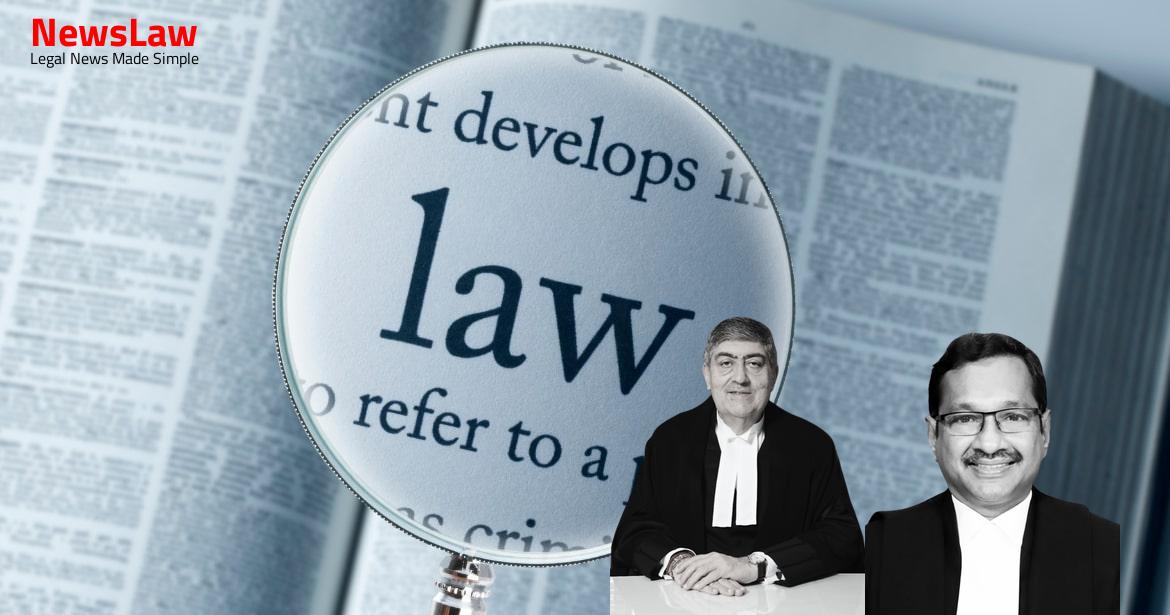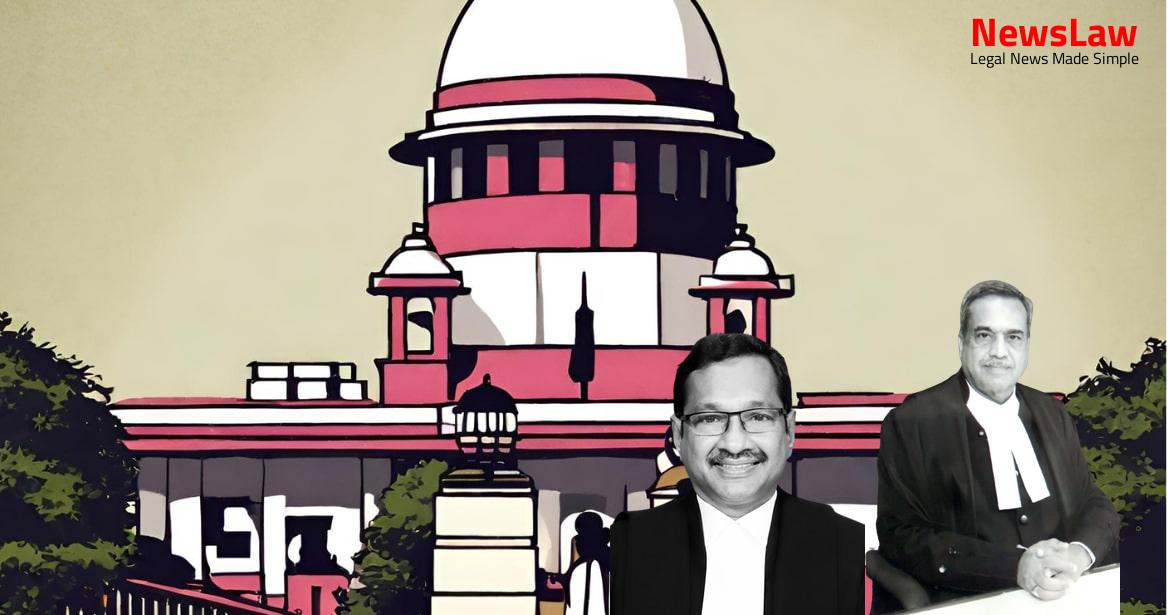Explore the in-depth legal analysis conducted by the court in a recent case concerning debt classification and limitation issues. The core dispute revolves around the classification of the appellant as an operational creditor and the time-sensitive nature of the application under the IBC. This blog post unveils the court’s thorough examination of the legal framework and principles involved, shedding light on the complexities of insolvency proceedings and creditor classifications.
Facts
- CMRL’s letter dated 27 December 2016 did not state that it will not attempt to recover the amount from the Proprietary Concern in the future.
- Appellant requested the Proprietary Concern to refund Rs 50,00,000 after the contract termination, and the amount was returned to CMRL.
- NCLAT’s decision was appealed against.
- CMRL informed the appellant about terminated project on 2 January 2014.
- On 4 August 2016, the appellant requested the return of Rs 50,00,000 from the Proprietary Concern, which was refused.
- The respondent was incorporated on 28 January 2014.
- Appellant requested Proprietary Concern to return the amount, which was refused, and a bank guarantee was requested instead.
- NCLT admitted the application under Section 9 of the IBC, declared a moratorium, and appointed an IRP.
- The respondent denied owing any debt to the appellant.
- Appellant demanded the return of the amount from Proprietary Concern on 27 February 2017.
- NCLAT reversed NCLT’s decision on 12 December 2019.
- Appellant obtained a letter from CMRL on 27 December 2016 stating the cheque issuance was on the appellant’s request.
- Proprietary Concern agreed to indemnify once the amount was released.
- Appellant sent Form-3 Demand Notice under Section 8 of the IBC to the respondent on 18 July 2017.
- Appellant filed an application under Section 9 of the IBC on 1 November 2017.
- NCLT determined the debt owed to the appellant by the Proprietary Concern.
- Appellant paid Rs 50,00,000 to CMRL and informed the Proprietary Concern.
- Appellant is considered an operational creditor under the IBC.
- No letter received by the respondent regarding contract termination with CMRL or agreement to return the amount.
- The NCLAT set aside the NCLT’s decision and dismissed the application of the appellant under Section 9 of the IBC.
- The respondent was released from the ongoing CIRP.
- The NCLAT held that the appellant was considered a ‘purchaser’ and therefore did not fall under the definition of ‘operational creditor’ under the IBC.
- There was no evidence to suggest that the respondent had taken over the Proprietary Concern.
- The appellant was unable to file an application under Sections 7 or 9 of the IBC due to the timing of purchase orders and advance cheques issued.
Also Read: Electoral Malpractices in Mayor Election
Issue
- Appellant’s status as an operational creditor despite being a ‘purchaser’
- Determining whether the respondent acquired the debt from the Proprietary Concern
- Assessment of whether the application under Section 9 of the IBC is time-barred
Also Read: Balancing Power and Transparency: Electoral Bonds Struck Down, Disclosure Mandated
Arguments
- Appellant’s dealings were only with the Proprietary Concern, not the respondent.
- The respondent’s intention to take over the Proprietary Concern was changed through a subsequent Board resolution.
- The Proprietary Concern still exists as a separate entity from the respondent.
- No privity of contract between the appellant and the respondent as the contract was with the Proprietary Concern.
- CMRL made the payment of the advance to the Proprietary Concern.
- Reject the argument that there was no privity of contract between the appellant and the respondent.
- The respondent cannot be held liable for the debt of the appellant.
- The appellant did not provide goods or services to the respondent, but availed goods or services from the Proprietary Concern.
- The appellant is not an operational creditor as they did not provide goods or services to the respondent.
Also Read: Recall of Resolution Plan Approval: Legal Analysis
Analysis
- The dispute involves the appellant claiming to be an operational creditor while the respondent contests this claim.
- The appellant argues that the debt is operational, making them an operational creditor, but the respondent disagrees.
- The respondent alleges that the debt falls outside the operational debt category.
- The limitation under Article 137 of the Limitation Act 1963 is a point of contention, with the respondent arguing that the application under Section 9 was filed after the expiry of the limitation period.
- The operational debt definition under Section 5(21) involves claims related to the provision of goods or services.
- The appellant’s application under Section 9 is challenged on the grounds of being time-barred.
- The core dispute remains between the appellant and the Proprietary Concern, with the debt arising from their transactions.
- Operational creditors are defined by debts arising from operational transactions, which involve goods or services necessary for an entity’s operation.
- The respondent’s conduct in bringing up a resolution document late could lead to an adverse inference against them.
- The limitation issue regarding the debt commencement date is disputed and detailed in the analysis.
- The application under Section 9 is ultimately found to be maintainable, and the limitation argument is rejected.
- The Court struck a balance between the text of the statute and the purpose of excluding related party financial creditors trying to circumvent the exclusion under Section 21(2).
- The Court addressed the constitutionality challenge on IBC provisions in Swiss Ribbons and the difference in rights between financial and operational creditors.
- In Pioneer Urban and Phoenix ARC cases, the Court interpreted Section 21(2) to exclude related parties from the CoC.
- Mobilox Innovations and B.K. Educational Services cases discussed operational creditors initiating CIRP and the applicability of the Limitation Act to IBC applications.
- Observations in Mobilox Innovations led to IBC amendment Act 26 of 2018 and highlighted concerns about insolvency proceedings for small debts.
- Differences between home buyers and operational creditors were highlighted, noting the nature of relationships and financial considerations.
- Innoventive Industries case addressed termination of projects.
- Section 10(1) of CA 2013 explains the legal effect of an MOA.
- Section 13 outlines the requirements for altering an MOA.
- Section 4(1) specifies the necessary information that an MOA must contain.
- One of the requirements under Section 4(1)(c) is to include the objects for which the company is proposed to be incorporated.
Decision
- Application under Section 9 will not be barred by limitation
Case Title: M/S CONSOLIDATED CONSTRUCTION CONSORTIUM LTD. Vs. M/S HITRO ENERGY SOLUTIONS PRIVATE LIMITED (2022 INSC 150)
Case Number: C.A. No.-002839 / 2020



